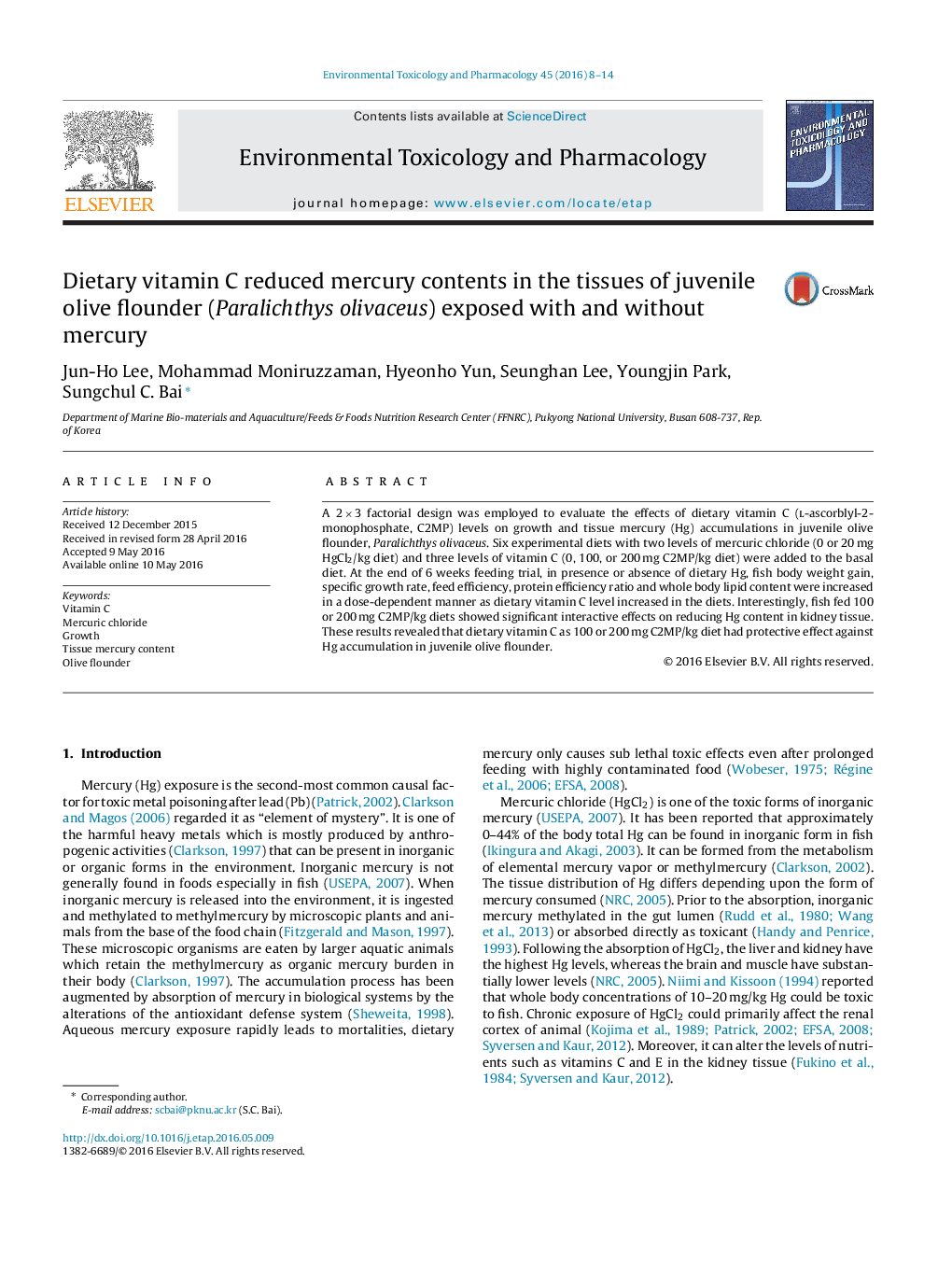| Article ID | Journal | Published Year | Pages | File Type |
|---|---|---|---|---|
| 5848550 | Environmental Toxicology and Pharmacology | 2016 | 7 Pages |
â¢We tested 2 Ã 3 factorial design to evaluate the effects of dietary vitamin C on induced Hg toxicity in juvenile olive flounder.â¢Dietary vitamin C had effective role to reduce tissue mercury burden and growth improvement in fish.â¢Fish survivability was not affected by dietary HgCl2.â¢HgCl2 was highly deposited in kidney tissue.â¢Dietary vitamin C and Hg showed interactive effect in reducing Hg content in kidney tissue.
A 2Â ÃÂ 3 factorial design was employed to evaluate the effects of dietary vitamin C (l-ascorblyl-2-monophosphate, C2MP) levels on growth and tissue mercury (Hg) accumulations in juvenile olive flounder, Paralichthys olivaceus. Six experimental diets with two levels of mercuric chloride (0 or 20Â mg HgCl2/kg diet) and three levels of vitamin C (0, 100, or 200Â mg C2MP/kg diet) were added to the basal diet. At the end of 6 weeks feeding trial, in presence or absence of dietary Hg, fish body weight gain, specific growth rate, feed efficiency, protein efficiency ratio and whole body lipid content were increased in a dose-dependent manner as dietary vitamin C level increased in the diets. Interestingly, fish fed 100 or 200Â mg C2MP/kg diets showed significant interactive effects on reducing Hg content in kidney tissue. These results revealed that dietary vitamin C as 100 or 200Â mg C2MP/kg diet had protective effect against Hg accumulation in juvenile olive flounder.
